|
We are pleased that one our museum displays was recognized by the USS Landing Craft Infantry National Association and a story published in their official newsletter. The USS LCI National Association's mission is to honor World War II Landing Craft Infantry veterans for their service to our country and to preserve the history. See pages 4 and 18 - 22 in the link below to read more about this unique display with interesting connections.
USS Landing Craft Infantry National Association
0 Comments
Our featured artifact is a bundle of radar jamming foil strips that were commonly referred to as ‘chaff’ during WWII. It is a somewhat common misconception that the British were the first to develop RADAR during WWII. This is probably due to the widespread attention given to the tall radio transmission towers that were commonplace along the British coast of the English Channel that were successfully used in detecting incoming German bombers during the Battle of Britain in the summer of 1940. However, RADAR’s (an acronym for RAdio Detection And Ranging) origins can be traced as far back as the late 1800’s, when in 1886 a German Physicist named Hertz showed that radio waves could be reflected from solid objects. As is often the case, word spread in the scientific community. Independent researchers in Britain, France, Italy, Germany, Japan, the Netherlands, the Soviet Union and the United States realized the value of this technology and worked independently and in great secrecy on developing the system which would become modern RADAR. Essentially, RADAR uses radio waves to determine distance (range), angle and velocity of the object in relation to the radar site. The acronym (RADAR) was first coined by the U.S. Navy in 1940 and the term ‘radar’ became commonplace thereafter. Along with the British and Americans, the Germans also had their own functioning radar system at the outbreak of WWII. They had not only developed long range radars to detect incoming bomber streams, but had also developed smaller microwave radar systems that could be used to direct Flak gun batteries as well as searchlights towards incoming aircraft to great effect. As with any technology during wartime, attention was quickly turned towards an effort to counter the radar systems. Like the development of radar, the idea of a countermeasure to radar was simultaneously being developed in the UK, Germany, the United States and Japan. In 1942, it was a Welsh researcher by the name of Joan Curran that first came up with the idea of dumping packs of size-specific aluminum strips from aircraft to generate a cloud of false echoes to the originating radar. It was discovered that the system was most effective when the strips were cut to a length and width that was one half of the target radar’s wavelength. When the chaff was hit by the radar beam, it would resonate and re-radiate the signal back, virtually cluttering and overwhelming the radar signal. The opposing radar operator would find it almost impossible to distinguish aircraft from the echo caused by the chaff and therefore mask the location and speed of the aircraft. Unknowingly, the Germans and Japan had also developed similar countermeasures. The British called theirs ‘window’, Germany had ‘duppel’ and the Japanese had ‘giman-shi’ (deceiving paper) as well as the American ‘chaff’. Both the Axis and the Allies were hesitant to use the countermeasure in fear that the technology would soon be discovered by the other side and used against them. RAF Bomber Command was finally given permission by Air Chief ‘Bomber’ Harris for use in Operation Gommorah, the night bombing raid on Hamburg in July of 1943. The results were overwhelmingly successful. With the radar systems swamped by false echoes, searchlights wandered aimlessly around the night sky and flak guns fired randomly and failed to locate the bomber stream. Chaff was used regularly thereafter by the Allies. Initially chaff was simply heaved out open windows on the bombers until modifications were made using a designed chute in which chaff was fed through the aircraft into the slip stream at timed intervals. Later, automatic chaff dispensing systems were developed. Chaff was used successfully throughout the remainder of the war until the Germans developed new technologies that helped counter their effect. Our example of bundled chaff strips are roughly 16” long by 1mm wide and would have been used against a specific type of radar. Other examples of wider or longer aluminum strips would have been used against radars of a different (i.e.- long range vs. short range radar) wavelength. The bundles shown were designed to break apart in the slipstream and release its contents into the air. Chaff was a cheap and simple, but effective development which undoubtedly saved countless lives of airmen during the second world war. Among the many interesting things we have in storage are two radios that might have been used to listen to news about the fighting during World War II. The older of the two is a Philco model 610 radio. This make and model was made in 1935 and 1936. This is known as a "tombstone" radio, given its resemblance to a tombstone. Typical of 1930's vintage radios, it has a small window in the center to see which radio station is being tuned into. Another picture taken of the back of this radio shows its internal components. Among the internal parts is a device known as a vacuum tube. It was used to amplify (increase the strength of) the received radio signal. Vacuum tubes were replaced by transistors many years ago, so for a lot of young people today the tubes are a strange sight. Philco was an electronics manufacturer that was headquartered in Philadelphia, Pennsylvania, and the model 610 was one of many radios produced by that company.
Once the war began, many products were no longer produced, or production was reduced due to the demands of military equipment production for the war. It is therefore likely that radios from the 1930's that still worked were kept in use as the supply of new civilian radios decreased. The other radio seen here is a Sonora LWU-181. Despite the above mentioned war production changes, it was introduced during the war in 1942. A big difference from the Philco can be seen with the bigger radio tuning indicator. The Sonora company label can be seen just below the speaker. It includes a picture of a bell because of the "clear as a bell" slogan on company advertisements. It is difficult to find information about the Sonora Corporation. Definitely not in existence anymore, it went out of business in January, 1957. These radios are interesting objects from a time when families gathered around the radio to listen to news and entertainment programs before the introduction of television sets. On radios such as these one could have listened to news of the Normandy Invasion or one of President Roosevelt's "fireside chats." This months museum spotlight is about a recent event at the museum where WWII Historian and Reenactor Joel E. Brown talked about the Tuskeegee Airmen. Below is an article he wrote about the presentation and some pictures from the event.
99th Fighter Squadron Over Anzio (Tuskegee Airmen with 12th Tactical Air Force WWII) by WWII Historian Joel E. Brown Toward the end of April 1943, the 99th F.S. was the first contingent of African American fighter pilots to reach the war zone in WWII. Eight days before the invasion of Sicily on July 2nd, 1943 while escorting B-25 medium bombers of the 12th Tactical Air Force flying out of Tunisia, a F.S. pilot shot down an attacking German FW-190. His name was Charles B. Hall of Indiana, the first African American to confirm an air to air victory in WWII. (However preceding Charles B. Hall with the distinction of being first in shooting down an enemy aircraft was Dorie Miller on the battleship Arizona at Pearl Harbor on the first day of North America's entrance into WWII, December 7th, 1941. Using a .50 cal. heavy machine gun mounted on an upper deck of the battleship, Dorie Miller shot down as many as five (5) attacking Japanese aircraft. Eleven months later during the Allied invasion of North Africa, early November 1942 Black gunners of the 450th Anti-Aircraft Battalion from on board a naval vessel destroyed a German fighter-bomber). It would be over six months from July of 1943 before the 99th pilots confirmed their next air victory. On January 22nd, 1944 Allied forces landed at Anzio on the SW coast of Italy. During this period the 99th was fourth squadron of the 79th Fighter Group. The 12th Tactical Air Force was made responsible for isolating the battle area to prevent enemy forces from bringing up reinforcements and supplies necessary for a successful counterattack. On the morning of January 27th A Flight of the 99th led by Captain Clarence Jamison spotted a group of enemy fighters over the Anzio beachhead. In less than four minutes the American pilots had downed five enemy aircraft. That afternoon three more enemy aircraft were destroyed by the 99th pilots. On January 28th the 99th was credited with four more, Captain Charles B. Hall confirming two. Between February 5th and 10th the 99th got another four, bringing their total to date 17 confirmed, 4 probables, and 6 damaged. The success of the 99th now brought official commendation from U.S. military sources previously negative on its future. On 19 March 1944 the 99th was tasked with knocking out the 280 mm RR Gun called; Anzio Annie, Anzio Express, or Leopold by the Germans. Eight P-40's were sent out to find tunnel openings in which the railroad gun might be hiding. When the tunnel was located four bombs were dropped. One American P-40 was damaged by flak, but Annie was permanently silenced. This month’s featured artifact is a May 20th, 1944 issue of the ‘Penguinews’, a twice-monthly newsletter published by Naval Air Station Minneapolis throughout the war. The magazine’s name was derived from the air station’s insignia featuring a penguin on skis (a light-hearted nod to our northern location and climate) and was designed by Walt Disney Studios per direct request and adopted by the base in 1941.
The Penguinews was published by the public relations department on base and had its own production staff, editors and photographers. The publication was available to all on base and could be mailed out to personnel domestically for 1 ½ cents or 6 cents overseas. The featured issue’s cover photo shows personnel of the U.S. Naval Women’s Reserve (‘WAVES’) working on the finer points of airframe fabric covering as a cadet and instructor walk past several N2S training aircraft on the tarmac in the spring of 1944. The newsletters were a realistic snapshot of life on the base during WWII. Most of the issues contained humorous or playful news from around the station, upcoming events such as parades, picnics and sporting events on base as well as the latest entertainment available such as what movies were being shown at the base theater or the latest books available in the base library. The newsletters also include the names of individuals highlighted for a particular talent in the ‘Meet Your Mates’ or ‘Cadet of the Week’ sections as well as the names of current and former base personnel that may have been promoted, received awards or became casualties overseas. There was often an inspirational message from the base chaplain and important war news was often mentioned. Most issues also included a separate page or a highlight of things happening at our own Fleming Field. Naval Air Station Minneapolis consisted of two bases with the main ‘A Base’ being located at Wold-Chamberlain Field (the current location of Minneapolis international Airport) and the auxiliary ‘B Base’ located ten miles to the east at Fleming Field in South Saint Paul. The addition of the B Base at Fleming Field roughly doubled the capability of the base to train aviation cadets when it was established in 1943. The sole mission of Naval Air Station Minneapolis during the war was to serve as a primary training base for aviation cadets learning to fly and to prepare them for advance training prior to combat. While the pilots often got the glory, these publications illustrate that we would be remiss not to highlight the many dozens of supporting roles on the base making their own contribution to the war effort including the WAVES, storekeepers, seamen, yeomen, radiomen, mechanics, meteorologists, parachute riggers, metalsmiths and various other specialties that were absolutely vital in fulfilling that mission. In 1939, at the beginning of World War II, the helmet type being worn by British and Commonwealth soldiers came from a design by John Leopold Brodie that was introduced into service during World War I. By 1941, a new helmet was developed by the Medical Research Council, an organization responsible for coordinating and funding medical research in the United Kingdom. The new Mark III helmet was not made until 1943, and it offered better comfort and protection to the soldier wearing it. First used in combat by British and Canadian soldiers on the Normandy invasion of June 6, 1944, it is often referred to as the "turtle" helmet because of its vague resemblance to a turtle shell. Although it was meant to replace the Brodie helmet, it ended up being worn as an alternate helmet, serving along with the older Brodie designed helmet from June, 1944 until the end of the war. Once the war ended in 1945, the Brodie helmet was finally replaced.
During the war, improvements were made to the Mark III, which resulted in the Mark IV helmet. In 1944 production of the Mark III stopped in favor of the newer Mark IV, and it closely resembled the older Mark III. Gradually replacing the Mark III, the differences of the Mark IV included the placement of the chinstrap attachment rivets lower down on the helmet, and also a new liner. This new helmet liner featured a quick release fastener that enabled it to be easily removed and attached to the outer metal shell. More commonly known as the "lift the dot" fastener, it consisted of a stud in the very center of the metal shell that was firmly grasped by a spring-loaded grommet on the liner. Such a design allowed the liner to be easily snapped on and off of the attachment stud. With the liner removed and the chinstrap still attached, the outer shell could be used as an improvised water bucket. As the helmet continued to be used by the British armed forces, another improvement was made in the 1950's, resulting in the Mark V. This version featured an improved and more comfortable helmet liner, but it still kept the "lift the dot" fastener. Older Mark IV helmets could be upgraded to the Mark V simply by replacing the helmet liner. The Mark V would continue to be worn by the British armed forces well into the 1980's, until it was replaced by the modern Mark VI helmet. Our helmet shown in these pictures is a Mark V. This German World War II helmet was simply called the Stahlhelm. "Stahlhelm" is a German word that means "steel helmet". It was derived from a helmet design first introduced into regular service during World War I in early 1916. Changes to the helmet design were made after World War I, and by World War II three main versions of this helmet were worn.
The first version was introduced before World War II, in 1935. Often referred to as the M1935, it was made by pressing sheets of molybdenum steel in several stages. It had ventilator holes that were set in hollow fittings mounted to the helmet's shell. The edges of the shell were rolled over, creating a smooth edge along the helmet. It also had a new leather suspension, or liner, that was incorporated to improve the helmet's safety, adjustability, and comfort for each wearer. These improvements made the new M1935 helmet lighter, more compact, and more comfortable to wear than the previous designs. The German armed forces officially accepted the new helmet on June 25, 1935 and it was intended to replace all other helmets in service. The second version was introduced in 1940. It was a modification of the M1935 to simplify its construction. The manufacturing process of the helmet incorporated more automated stamping methods. The principal change was to stamp the ventilator hole mounts directly onto the shell, rather than utilizing separate fittings. In other respects, the M1940 helmet was identical to the M1935. The Germans still referred to the M1940 as the M1935, while the M1940 designation was given to this version by collectors after the war. The third version was introduced in 1942. This design was a result of continuing wartime demands. The rolled edge on the helmet shell was eliminated, creating an unfinished edge along the rim. The elimination of the rolled edge expedited the manufacturing process and reduced the amount of metal used in each helmet. Manufacturing flaws were also observed in M1942 helmets made late in the war. The three helmet types were painted in several different colors or camouflage patterns as the war progressed. The colors varied from traditional grey to a dark yellow shade, and even to white for winter camouflage. Other markings sometimes included decals or insignia for the various branches of the German armed forces. These were often applied to the sides of the Stahlhelm during the war. However, on August 28th 1943, the helmet factories were ordered to stop applying these decals. By halting the application of all decals, these factories could save time and money, thus simplifying production at a time when the war was already turning against Germany. At the end of the war, many of these helmets were brought back to the United States by victorious American soldiers. Later, such helmets were bought and sold by collectors, or added to the collection of many museums. Our helmet appears to be a Model 1942 Stahlhelm. It has one decal of the type that was placed on helmets used by the German Army. This month’s featured artifact from the MN CAF archives is the U.S. Army B-4 life preserver. Our example was manufactured by the Firestone Rubber and Latex Products Company. The manufacture date is no longer readable, but it has a clear inspection date of 1-12-45, making this a nice wartime example. The USAAF Pneumatic Life Vest was a yellow rubber life vest that inflated using liquid CO2 cartridges in the vest that were activated by pulling on two cords at the bottom of the vest. When released, the liquid turned to gas and quickly inflated the pockets of the vest. As a back-up, rubber inflation tubes were incorporated into the front of the vest near the neck hole and could be blown into and manually inflate the vest. Fully inflated, the wearer of the vest resembled a buxom woman. This resulted in the WWII men who wore them to begin referring to them as ‘Mae Wests’, aptly named after the well-endowed film star of the time. What many do not know is that the inflatable life preserver was invented by a Minnesota man by the name of Peter Markus. Markus was a merchant living in Minnesota and was an avid boater and fisherman. He was attuned to the fact that fishermen were falling out of their boats and drowning because they were unwilling to wear the bulky life preservers of the time, which were filled with cork and hindered arm movement while fishing. He started experimenting and invented a new style device based on a man’s vest. It slipped over the head and had waist straps sewn into the front that could be secured behind the back. Markus received a patent for his invention in 1928, with patented changes in 1930 and 1931. A Navy captain happened to catch Markus demonstrating the device during a sportsman’s show and quickly realized its military value. Markus was invited to Washington to demonstrate it for the military brass. Shortly after, the Navy began purchasing them. The value of the vest became apparent soon after when an aviator in Hawaii and his passenger put their plane down in the water off Honolulu. The pilot was wearing the vest, but the passenger was not. Only the pilot survived. It was a powerful message and soon after, the vests became regulation equipment for all Navy fliers, as well as being incorporated into the other branches of the service shortly thereafter. The investment paid off handsomely when in 1935, the rigid airship, U.S.S. Macon went down in the Pacific and 98 of the 100 vest-wearing crew survived. During WWII, Peter Markus’ pneumatic vest was worn by fighter pilots, bomber and transport crews and even the paratroopers crossing the English Channel enroute to Normandy on D-Day. Whether it was over the Atlantic, Pacific or the Mediterranean, his device no doubt saved the lives of thousands of soldiers during WWII. Photo credits Commemorative Air Force Minnesota Wing, toflyandfight.com and the National Archives. This month’s featured artifact is this U.S. Government issued aircraft recognition model of the P-2V Neptune. The P-2 first flew in May of 1945 and was put in production too late for service in WWII but later served as a maritime patrol and anti-submarine warfare aircraft during the Cold War.
As WWII unfolded, the importance of aircraft recognition became increasingly apparent. Aircraft recognition models, also known as ‘spotter’ or ‘i.d.’ models were produced by the thousands and used for training purposes for both military personnel and civilians alike. These models were painted flat black and lacked any real surface detail or markings in order to simulate a silhouette. Air crewmen, anti-aircraft personnel as well as civil defense workers were required to quickly identify an aircraft based solely on its general outline and major surface features such as its fuselage and wing shape, tail surfaces or number of engines from all possible angles. The importance of getting it right could mean the difference between targeting a friendly aircraft or allowing an enemy aircraft to fly by unscathed. It was also crucial for civilian ground spotters to correctly identify aircraft passing over in order to relay important information such as: number of aircraft, direction of flight and altitude to military authorities so that intercept aircraft could be scrambled. Aircraft spotting and identification was vital for civilian defense. Accurate identification was essential in order to sound off air-raid warnings and give civilians and wartime workers the crucial extra minutes to take shelter, whereas a false alarm would cause an unnecessary disruption to production output. After the attack on Pearl Harbor on December 7th, 1941, the U.S. Bureau of Aeronautics put out a request for schoolchildren to produce over 500,000 scale aircraft models out of balsa wood to help civilians and soldiers differentiate friend from foe. As the uncertain nature of the war progressed, especially after German submarine sightings off the East Coast and Japanese shelling on the West Coast, aircraft recognition became an important, useful and even fun pastime for civilians and children. Millions of posters, publications, advertisements and even children’s games were produced during the war as an educational tool for identifying aircraft. Our P-2V is made from mold injected resin and has a 17” wingspan and is 13” in length. After the war, these models became surplus and were sold by the thousands in Army/Navy surplus stores throughout the country and are considered collectible items today. This month’s featured artifact is an original WWII E-1 Bombardier’s bag that belonged to 1st Lt. Scott A. Mouse of Emporia, Kansas. Lt. Mouse was a bombardier-navigator and served with the 490th Bomb Squadron of the 10th & 14th Air Forces, infamously known as the ‘Burma Bridge Busters’.
The 490th Bomb Squadron flew innumerable missions in the (C.B.I.) China, Burma and India Theatre– often referred to as the “forgotten theater” of WW2. Activated in Karachi, British India as a B-25 Mitchell bomber squadron, the Burma Bridge Busters flew 615 missions between February 1943 and August 1945. During this period, the squadron dropped over 8,257,000 pounds of bombs and destroyed 192 bridges. Operating under the 10th Air Force, the squadron also carried out tactical interdiction missions against Japanese communications lines and supported the British ground forces in Burma between 1943 and 1944. In January 1944, Squadron Leader Major Robert A. Erdin accidentally discovered a bridge-destroying skip bombing technique. After perfecting this skip-bombing technique and using it regularly during missions, the squadron was nicknamed ‘Burma Bridge Busters’ by the general in command of the Tenth Air Force. A year later, the squadron assumed another role – dropping propaganda flyers over Burma for the U.S Office of War Information. In April 1945, the squadron was reassigned to the 14th Air Force in China. Until the end of the war, they continued to disrupt enemy communication lines and provided support to Chinese ground forces. The primary objective of the squadron was to keep the Chinese in the war simply because this would tie down the nearly one million Japanese troops preventing them from operating elsewhere. During its three years of service, the 490th squadron received more than 1,000 individual citations, destroyed 192 bridges in China, Burma and India, and won two Distinguished Unit Citations. This navigator’s bag was graciously donated to us by Lt. Mouses’ family this past summer during a stopover in Iola, Kansas with our own B-25J, Miss Mitchell. The bag contains a treasure trove of original manuals, maps, a first aid kit and even a pistol holster belonging to Mouse. These items are a wonderful tribute To Lt. Mouse and to all the brave B-25 Mitchell crews that served during WWII. |
AuthorWelcome to the CAF MN Wing Blog. You will find information on projects we are working on, upcoming events, and more. Archives
April 2024
Categories
All
|

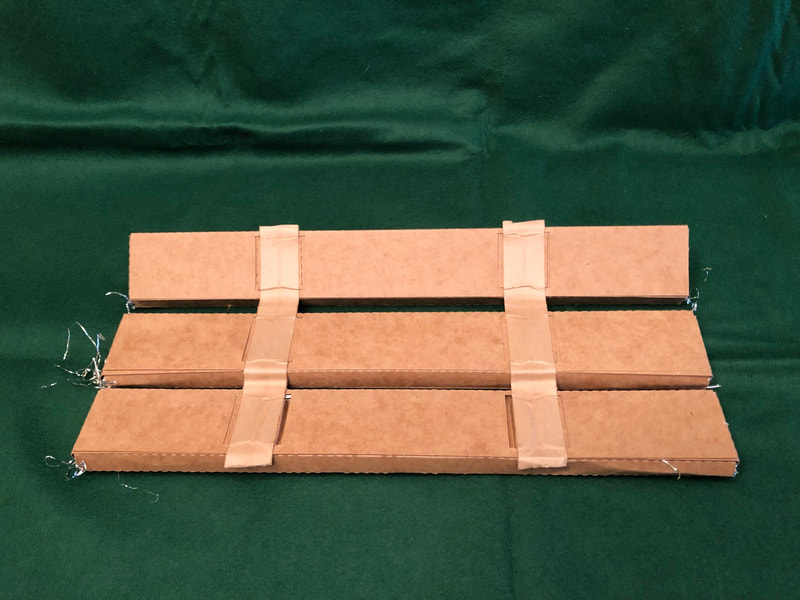

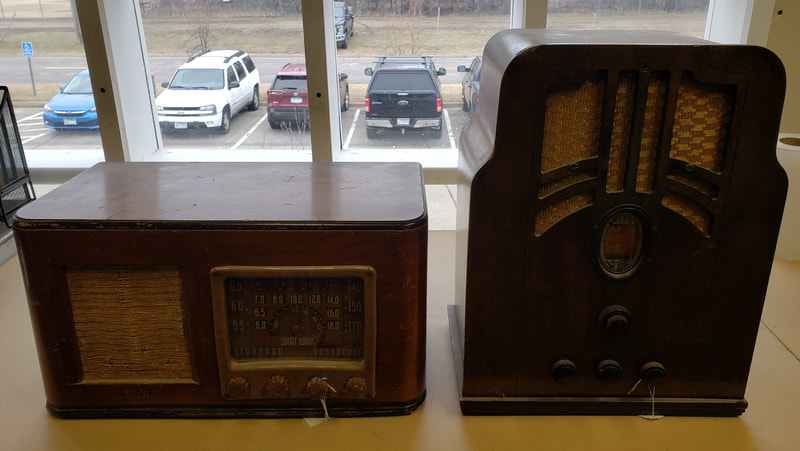












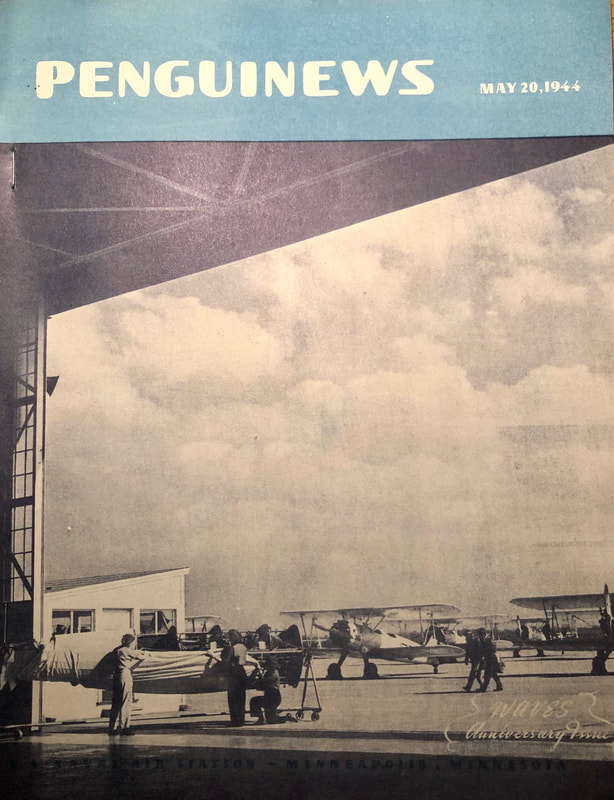

























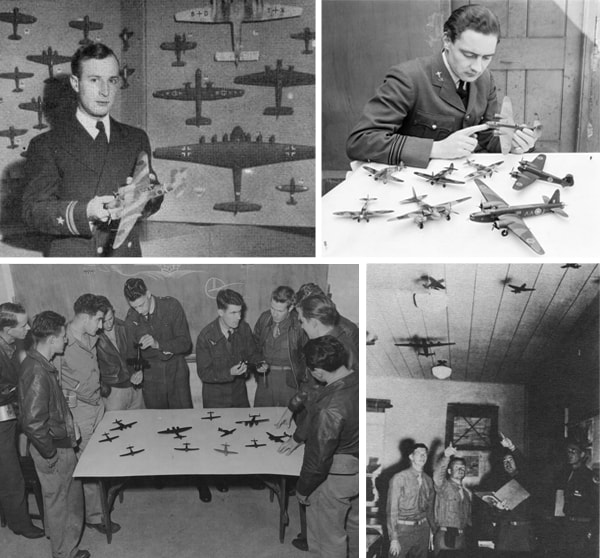
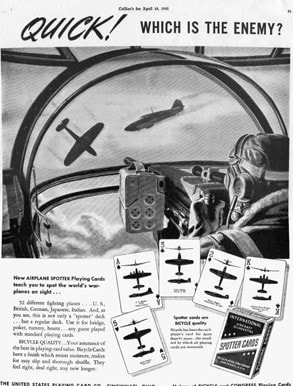








 RSS Feed
RSS Feed